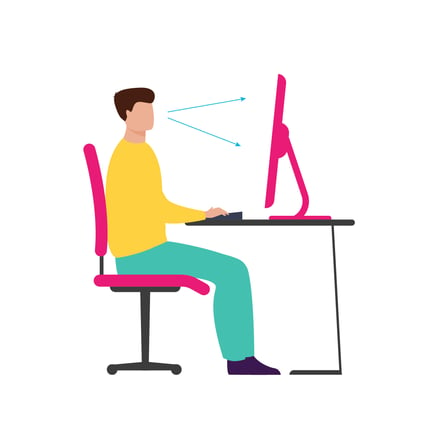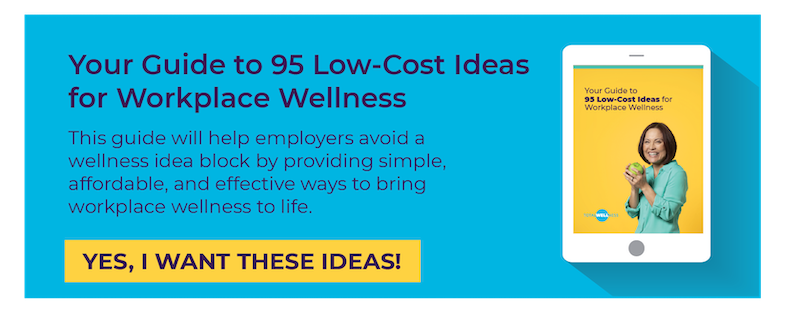 When was the last time your company checked ergonomics for the office?
When was the last time your company checked ergonomics for the office?
If it’s been a while — perhaps before the pandemic — it may be time to look at how employees' computer workstations are set up.
This is especially important given that four out of five workers are now experiencing musculoskeletal pain since working from home has become the norm. Carpal tunnel is one of the most well-known, especially for computer-based employees. As most workers are now working a full 40 hours in hybrid or remote-style environments, setting them up with the best possible workstation is key to their health and productivity.
Want to know more about how ergonomics increases morale and improves health and productivity?
Here’s a look at the importance of ergonomics for the office and the negative impacts of a poorly designed workstation.
What Exactly is Ergonomics?
As defined, ergonomics is essentially considered the study of people in their working environment. Or, a more scientific definition, as defined by the International Ergonomics Association Executive Council:
“Ergonomics (or human factors) is the scientific discipline concerned with the understanding of the interactions among human and other elements of a system, and the profession that applies theory, principles, data and methods to design in order to optimize human well-being and overall system performance.”
Related: Ergonomics in the Workplace: How Poor Posture Hurts Your Workers
What You Need to Know About Ergonomics for Office Workers
An efficiently-run workplace should be optimized for the well-being of its workers. Long-term employees can only thrive if they’re set up for success. The body only puts up with unhealthy behavior for so long before it rebels. Example: Think of that work chair you used for so long that the stuffing flattened and you could feel the metal protruding into your backside. Ouch. That’s an ergonomics issue.
For computer workers, it’s usually musculoskeletal disorders (MSDs) that cause the biggest issues. MSDs impact workers in a variety of industries and affect a wide range of the body, including muscles, nerves, blood vessels, ligaments, and tendons. Luckily, MSDs can be prevented by fitting people to their jobs appropriately.
Risk factors for MSDs include:
- Repetition of movement
- Fixed or constrained body positions
- Concentrated force on small body parts like the wrist
- Work that doesn’t allow for appropriate breaks or recovery
As you know, workers come in all different shapes and sizes. While it’s nice to have a sleek, cohesive look to all office furniture, not everyone will “fit” at the same brand of desk, chair, footrest, etc. It all needs to be customized to a person’s body for the best neutral working positions.
A few other things to know about ergonomics:
- MSDs impact the body in a major way - The body will start to show signs of pain, discomfort, and even fatigue when it comes to the musculoskeletal system. It must be treated or it can get worse or even cause permanent disability.
- Costs add up for worker injuries - Between insurance premiums, medical treatment, and prescription costs, an employee suffering from an injury may have multiple expenses that are on you or them or both. While replacing an entire desk or computer chair may seem expensive, an employee missing work due to injury costs more over time.
- Carpal tunnel syndrome is a common problem - Carpal tunnel syndrome impacts up to 1.9 million people, according to the Centers for Disease Control and Prevention website. Additionally, between 300,000 to 500,000 surgeries are performed each year to fix this condition. That means pain, time off, and recouping time needed for employees struggling with this.
If you’re starting to bring workers back into the workplace, it’s a great time to talk about best health practices for computer work. Engage in conversations about the comfort of their workstations to find out where your company may need to invest — remember, it’s a tax write-off!
Tips to Keep Your Employees Safe and Healthy
Sometimes, ergonomics is overlooked in the workplace because these often “silent” injuries occur over time with repetition. It may take a long time for an injury to appear. Or, it may be a sudden muscle tweak that causes severe pain and immediate limitations. That’s why it’s a must to check in with both remote and in-house workers to ensure they’re set up with proper workplace stations.
Here are some suggestions on how to keep office ergonomics in check:
Tip #1: Check-in with Workers
Ask team members if their chairs, desk, keyboards, footrests, etc. are still working well for them. They may need an upgraded or new workstation set-up.
Tip #2: Offer Training
Like many things in life, people tend to forget or get complacent with certain activities they need to do to stay healthy. For office workers, this may include proper posture and working positions. Provide quarterly training and reminders about appropriate ergonomics in the workplace. The Occupational Safety and Health Administration (OSHA) website has plenty of information on training and assistance and how to identify problems.
Tip #3: Encourage Movement
The body isn’t meant to sit for long periods of time. Remind employees to stand and stretch to prevent stiffness and pains. For a fun wellness reminder, send remote workers cute timers to set as a reminder to get up hourly. You can do the same for in-house workers, too.
Related: How Sitting is Harming Your Employees (+7 Tips to Fix It!)
Tip #4: Add Controls
Consider having leadership or a safety inspector take the time to observe workers in their natural work setting. Doing so can reduce injury risk once appropriate adjustments are made for the workspace. This might include new rules like two-plus people need to carry heavy loads together, updating equipment for better ergonomics, etc.
Tip #5: Watch the Eyes
Aside from musculoskeletal issues, it’s important to remember the eyes take a hit, too, when it comes to computer work. Pass out laminated 2x2 index cards with a reminder to tape to their computer about the 20-20-20 eye rule. For every 20 minutes spent looking at a screen, a user should look away at an object that’s 20 feet away for about 20 seconds.
Tip #6: Create a Chill Space
Tension stores itself in the body — often in the neck or shoulders — creating muscle knots, overcompensation by other muscles, and fatigue. Don’t let your workers get too tense in a stressful workplace. Create a space for them to blow off steam. That may be an on-site gym, yoga room, break room with a pool table, or even an outdoor community garden. Ask them what they’d like to see for relaxation options on the job.
Tip #7: Learn From a Pro
Consider bringing in a physical therapist for a lunch and learn discussion about office ergonomics. In doing so, you provide valuable insight to your staff about how their daily activities could be causing issues like neck or back pain. A physical therapist could offer training on how to sit appropriately at a desk and hacks for proper body positioning to get by (like putting a rolled-up towel behind your back) while new office equipment is ordered.
One Final Tip
Above all, remind workers that safety is first in the workplace. That goes for those lifting heavy items to those sitting at desks all day long. If your workers get injured on the job, it’s a costly event for both parties. The ultimate goal of knowing about ergonomics for the office is to reduce the risk of musculoskeletal disorders and other serious injuries. By understanding and applying safe office practices, your company can increase productivity, reduce injuries, and keep workers employed.
How does your company tackle ergonomics for the office? Do you offer ongoing training or other benefits to keep workers healthy?



